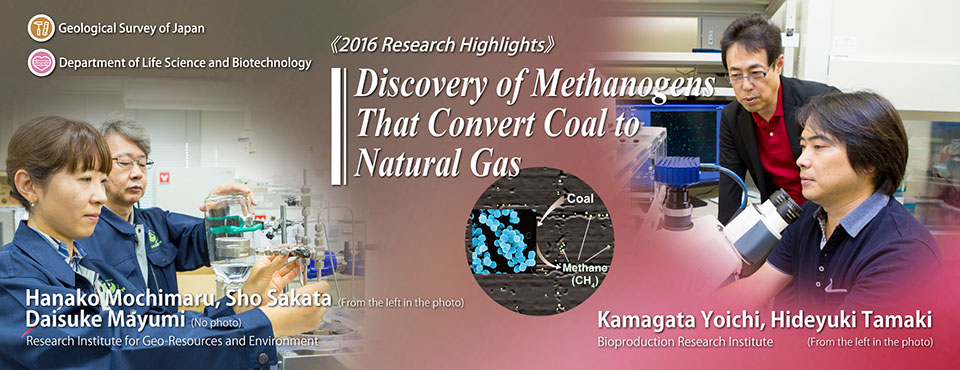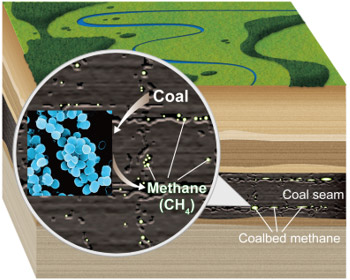
Point
The researchers discovered that methanogens living in deep subsurface environments produce methane directly from coal through a previously unknown metabolic pathway.
 |
|
Coal-bed methane in coal seams and methanogens that covert coal to methane |
Factors that Led to the Discovery
The geologists have various coal types and know that coal contains methoxylated compounds derived from the lignin of higher plants.dd
On the other hand, the microbiologists have a wide variety of isolated bacteria and can culture methanogens.
These researchers collaborated to perform various combinations of experiments, which led to the discovery of new methanogens and a new methanogenic pathway.
Background
In the United States, coal-bed methane has been actively developed and about 40% is estimated to be produced by microorganisms. Therefore, the microorganisms in coal seams are considered to have the ability to convert coal to methane. The discovery and application of this ability may reduce extraction efforts, as natural gas is easier to extract than coal from the deep subsurface. It was therefore anticipated that the mechanisms of methanogenesis, including the contributing subsurface microorganisms and their coal metabolic pathways, would be elucidated.
Future Research Plans
The researchers are planning to elucidate details of the metabolic pathways as well as evaluate the subsurface distribution of methanogens that use methoxylated aromatic compounds, and their potential in the formation of natural gas resources.